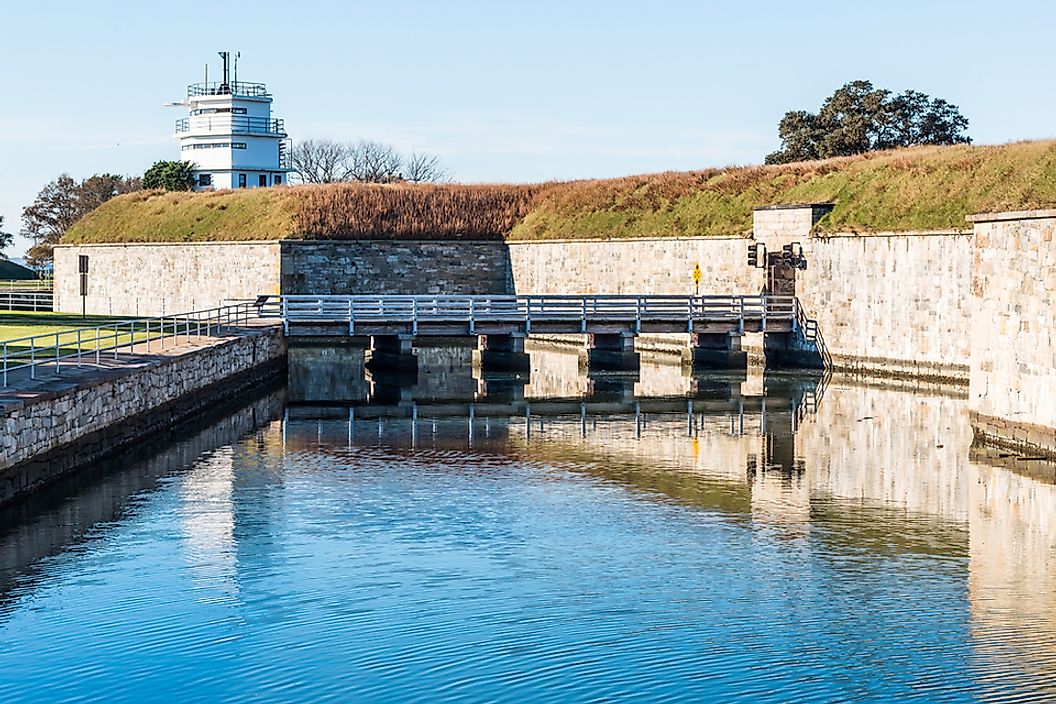Fort Monroe, Virginia - Unique Places in North America

Fort Monroe is a beautiful decommissioned military base at the Old Point in Hampton, Virginia. Now known as the Fort Monroe National Monument, the base helped guard the navigational channel between Hampton Roads and the Chesapeake Bay. Fort Monroe, in some form or another, has existed throughout much of America's history, up until the 21st century. The fort was decommissioned and most of its primary functions transferred to Fort Eustis on September 15, 2011. US President Barack Obama signed a proclamation on November 1, 2011 to designate the fort as a national monument.
Description
The 565 acres of the Fort Monroe include 170 historic structures and about 200 acres of natural resources, with 3.2 miles of beach on the Chesapeake Bay and 8 miles of waterfront. Fort Monroe has 85 acres of wetlands and 110 acres of submerged lands. The fort has a 332-slip marina and shallow water inlet access to the mill creek, which is ideal for smaller watercraft.
History
The importance of creating a coastal defense at the Old Point Comfort was noted by British captains John Smith and Christopher Newport when they explored Jamestown, Virginia in 1607. After establishing the Jamestown settlement, the colonists built Fort Algernourne in 1609 at the exact point where Fort Monroe is located. Fort Algernourne is believed to have been triangular in shape, but was destroyed by fire in 1612. Other small fort was built as replacements. Fort George was established in 1728 to replace Fort Monroe.
After the War of 1812, the United States recognized the need for protecting inland water and Hampton Roads from attacks by sea. Therefore, President Monroe developed the plan for the construction of coastal defenses in March 1819. The development of Fort Monroe began in 1892, and among the original structures in the fort is the Quarters 1, a building which was meant to be the residence of the commanding officer. The construction of the fort lasted for 25 years. Engineer Simon Bernard, a French Napoleonic general who was banished from France after the defeat of Napoleon in 1815 in Waterloo, designed the fort.
After construction ended, the fort was named Gibraltar of the Chesapeake Bay in 1834. The fort had an impressive complement of powerful artilleries including 32-pounder guns which could a distance of more than a mile. Fort Monroe and Fort Calhoun were enough to protect the shipping channel. Fort Monroe served as a site for numerous artillery schools, the first of which was the Artillery School of Practice, which closed in 1834. Artillery Schools of the United States Army opened in 1867, until 1907 when it was renamed the Coast Artillery School.
Tourism
Fort Monroe is now a famous historical site. In fact, the Casemate Museum, which opened in 1951, highlights the history of the fort and Old Point Comfort, with an emphasis on the Civil War era. The fort offers visitors a view of the cell in which Confederate President Jefferson Davis stayed. Tourists can also view the quarters which belonged to the 1st Lt Robert E. Lee, as well the quarters where President Abraham Lincoln stayed was a guest in 1862. The museum also displays the uniform of Edgar Allan Poe, renowned writer who was stationed in the fort in 1828 while serving as the artillery regimental command sergeant major.











